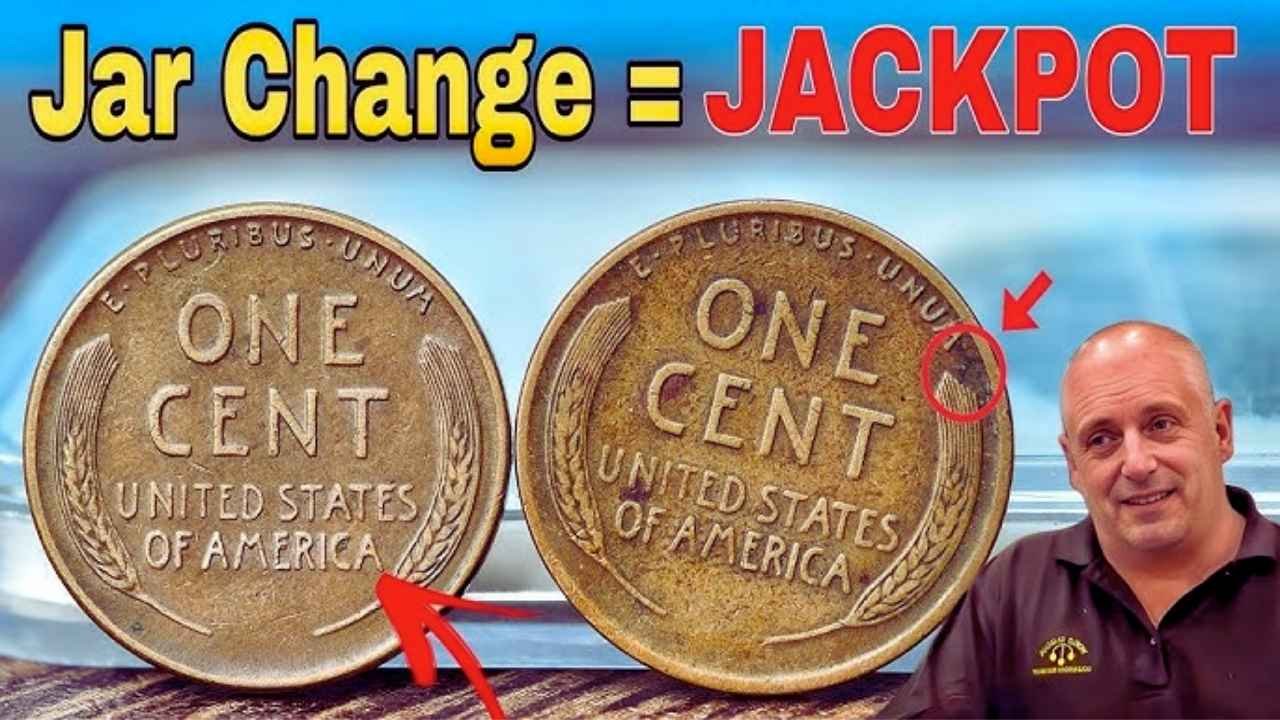Wheat pennies are often seen as simple copper coins, but beneath their modest exterior, some are worth astounding sums. Minted between 1909 and 1958, these coins were circulation staples for decades. What many people don’t know is that among the billions produced, a handful possess rare features, minting errors, or historical connections that have made them highly desirable to collectors. Here’s a look at five wheat pennies that sold for eye-popping amounts, highlighting why everyday coins can sometimes turn into hidden fortunes.
Why Some Wheat Pennies are Worth a Fortune
Most wheat pennies are only worth slightly more than their face value, but a few factors make certain years and variations incredibly valuable. Scarcity, unique minting mistakes, and the story behind the coin all matter. For example, coins struck in error or during years of limited production are often the ones that make headlines at auction. These rare pennies attract collectors and investors, driving up their prices to sums no one would expect for a penny.
Stories Behind the Million-Dollar Cents
Let’s take a closer look at five remarkable wheat pennies that made their lucky owners millionaires:
1909-S VDB
- This penny was the very first Lincoln cent, with the initials of its designer, Victor David Brenner (“VDB”), on the reverse. Only 484,000 were made at the San Francisco Mint before the design was changed. Because of its historic significance and rarity, pristine examples have been auctioned for over $1 million.
1943 Bronze Cent
- During World War II, pennies were supposed to be made from steel due to copper shortages. However, a few were accidentally struck on bronze planchets left over from the previous year. Fewer than 20 have ever surfaced. Some have sold for around $1.7 million at auction, making them one of the most coveted U.S. coins.
1914-D
- The Denver mint produced very few pennies that year, and many were used so heavily in commerce that few survived in top condition. A rare, well-preserved example recently sold for nearly $1.2 million.
1922 Plain
- In 1922, only the Denver mint produced pennies, but the “D” mint mark was sometimes missing because dies were overused. Examples without the mint mark (“Plain”) are extremely scarce and highly sought after. Top-quality coins have sold for over one million dollars.
1955 Double Die
- A minting error caused the date and lettering on this penny to appear doubled, an obvious flaw that makes the coin stand out. Only a few thousand exist, and collectors are willing to pay handsomely for crisp and clear examples; one recently fetched close to $2 million.
Comparison Table of Rare Wheat Pennies
| Coin | Known Examples | Most Recent Sale | Estimated Value |
|---|---|---|---|
| 1909-S VDB | 484,000 | Over $1M | $1M+ |
| 1943 Bronze | Fewer than 20 | $1.7M | $1.5M–$2M |
| 1914-D | Few thousand | $1.2M | Up to $1.2M |
| 1922 Plain | Severe scarcity | $1M+ | $1M+ |
| 1955 Double Die | Few thousand | Nearly $2M | $1.5M–$2M |
How to Spot a Valuable Wheat Penny
If you have an old jar of coins or inherited a collection, check your wheat pennies for these signs:
- The year and mintmark, especially if it matches these rare dates
- Any visible errors like doubled text or missing marks
- Exceptional condition with little wear
A professional coin dealer or grading service can help determine authenticity and value.
The Lasting Appeal of Rare Pennies
Wheat pennies show that even common-looking coins may be hiding rare gems. With a little luck and a careful eye, it’s possible to find a coin like these that could completely change your financial future—proving that sometimes, small things really can amount to millions.
